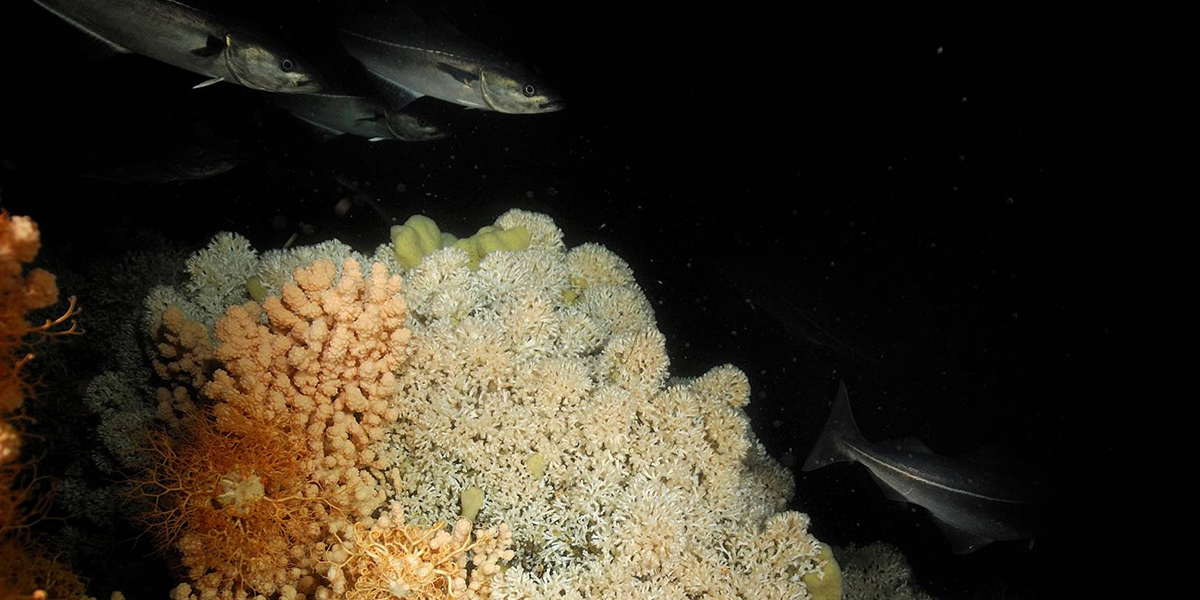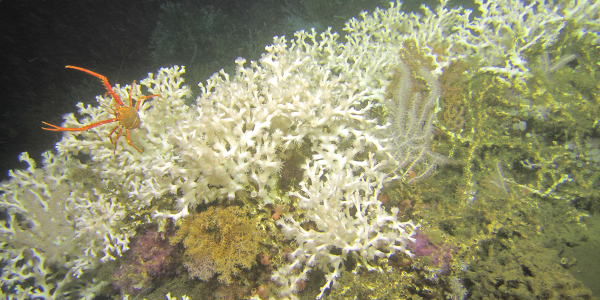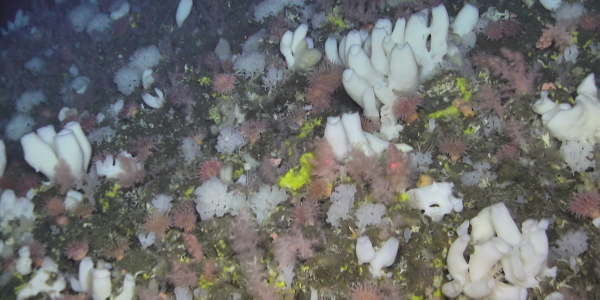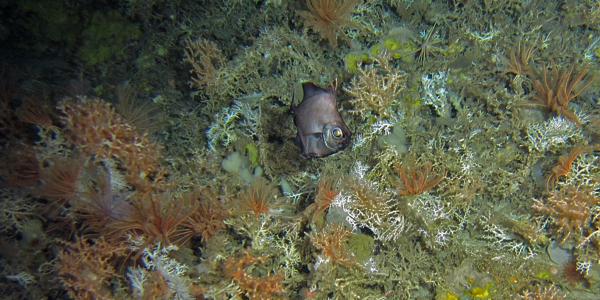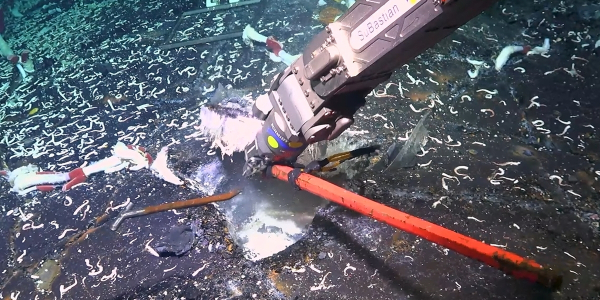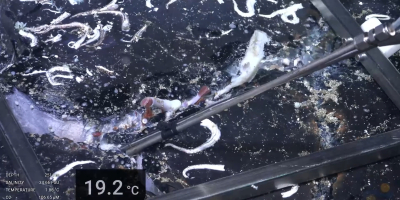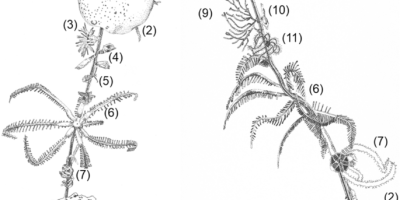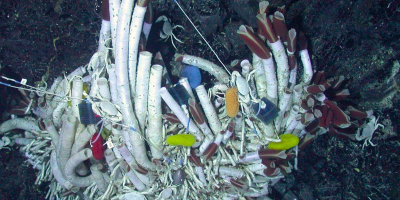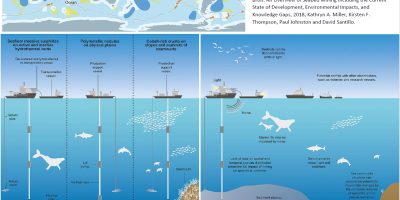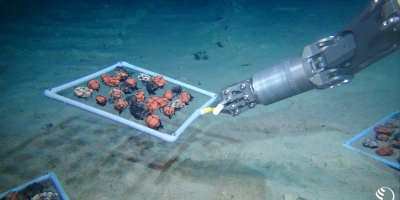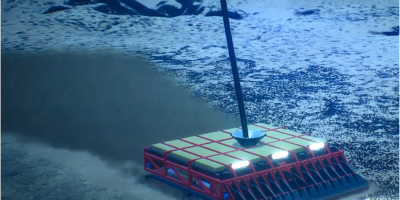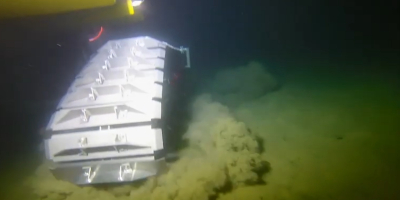Dossier: deep sea
~~ scroll naar beneden voor Nederlands ~~ for Dutch scroll down ~~
Extreme landscapes and special ecosystems
If we would drain the water from the oceans, we would see a landscape that is sometimes even more extreme than the most rugged parts of land with the deepest trench being deeper than the highest mountain on land. From extreme mountain ranges, with volcanoes and hydrothermal vents to vast abyssal plains; it's all there. Around these topographic features often special ecosystems are found, teeming with exotic life adapted to the harsh conditions in the deep sea. An example are cold-water corals reefs that are as diverse as their tropical counterparts. The corals that build these reefs get their nourishment from currents that bring food from the sunlit surface waters to great depths.
Mineral-resources-related activities in the deep sea
he deep sea is also on the agenda of the International Seabed Authority, that organizes and controls all mineral-resources-related activities in the Area for the benefit of humankind as a whole. Deep-sea ecosystems such as hydrothermal vents, polymetallic nodule fields and seamounts with coral and sponge ground may be under severe threat by future deep-sea mining. Scientific understanding of the deep-sea environment and mining’s likely impacts are essential to assess whether and under what conditions deep-sea mining may be possible whilst ensuring the effective protection of the marine environment from harmful effects.
This dossier offers background information on all aspects of the deep sea. Leading scientists present their scientific papers and offer context on the least studied part of our planet.
Dossier: diepzee
Twee derde van het aardoppervlak bestaat uit oceanen en zeeën. De diepzee is het grootste bioom op aarde en beslaat 90% van het volume van de oceaan. Beneden 200 meter diepte is het donker omdat er nauwelijks zonlicht kan doordringen, de druk toeneemt en de beschikbaarheid van voedsel afneemt.
Als we het water uit de oceanen zouden laten weglopen, zouden we een landschap zien dat soms nog extremer is dan de ruigste delen van het land, met de diepste geul die dieper is dan de hoogste berg op het land. Van extreme bergketens, met vulkanen en hydrothermale bronnen tot uitgestrekte vlakten; het is er allemaal. Rond deze topografische kenmerken zijn vaak bijzondere ecosystemen te vinden, die krioelen van exotisch leven dat is aangepast aan de barre omstandigheden in de diepzee. Een voorbeeld hiervan zijn koudwaterkoraalriffen die net zo divers zijn als hun tropische tegenhangers. De koralen die deze riffen bouwen, worden gevoed door stromingen die voedsel van het zonovergoten oppervlaktewater naar grote dieptes brengen.
De diepzee staat ook op de agenda van de Internationale Zeebodemautoriteit, die alle activiteiten met betrekking tot minerale hulpbronnen in het gebied organiseert en controleert ten behoeve van de hele mensheid. Diepzee-ecosystemen zoals hydrothermale bronnen, polymetaalknollenvelden en onderzeese bergen met koraal- en sponsbodems kunnen ernstig bedreigd worden door toekomstige diepzeemijnbouw. Wetenschappelijk inzicht in het diepzee-milieu en de waarschijnlijke effecten van mijnbouw zijn essentieel om te beoordelen of en onder welke voorwaarden diepzeemijnbouw mogelijk is en tegelijkertijd het mariene milieu doeltreffend te beschermen tegen schadelijke effecten.
Dit dossier biedt achtergrondinformatie over alle aspecten van de diepzee. Toonaangevende wetenschappers presenteren hun wetenschappelijke artikelen en bieden context over het minst bestudeerde deel van onze planeet.
Relevant external links
- Webpage of International Seabed Autority (ISA) and the agenda of the ISA council.
10 - 21 July 2023, the ISA council meets to conclude it's two year procedure on the new Mining Code. -
The International Seabed Authority (ISA) measures do not protect deep sea from harmful mining impact. Publication by Netherlands Institute for the Law of the Sea (NILOS, UU) and NIOZ, December 2022.
NIOZ in the media
A selection of (international) media coverage of NIOZ research and researchers.
Kennislink, 01 November 2023 - Mijnen in het diepzeemilieu.
Scientias, 09 August 2023 - Wetenschappers gluren voor het eerst ónder hydrothermale bronnen in de zeebodem en dat levert een baanbrekende ontdekking op.
Idw-online, 08 August 2023 - Wissenschafter*innen entdecken ein neues Ökosystem unter hydrothermalen Schloten.
Nieuwsuur, 02 August 2023 - Delfstoffen zoeken op zee?
NOS, 25 July 2023 - VN schuift besluit over diepzeemijnbouw opnieuw voor zich uit.
Spektrum, 20 July 2023 - Ein Kahlschlag auf 5000 Meter Tiefe.
De Correspondent, 12 April 2023 - In beeld: van wie zijn deze zeebodemschatten?
Greenpeace Magazine, February 2023 - Knollenfieber.
NPO Radio 1, January 2023 - Mijnen op de zeebodem (Henko De Stigter)
Trouw, December 2022 - Verzet tegen goudkoorts rondom diepzeemijnen groeit. ‘Het is een soort roofbouw.'
NPO Radio 1, October 2022 - Diep in de Stille Oceaan woedt een strijd tussen milieuorganisaties en de mijnbouw.
NIOZ podcast, 2021 - 'Op dit moment kunnen we de effecten van mijnbouw op de zeebodem niet overzien,' zegt Gert-Jan Reichart.
